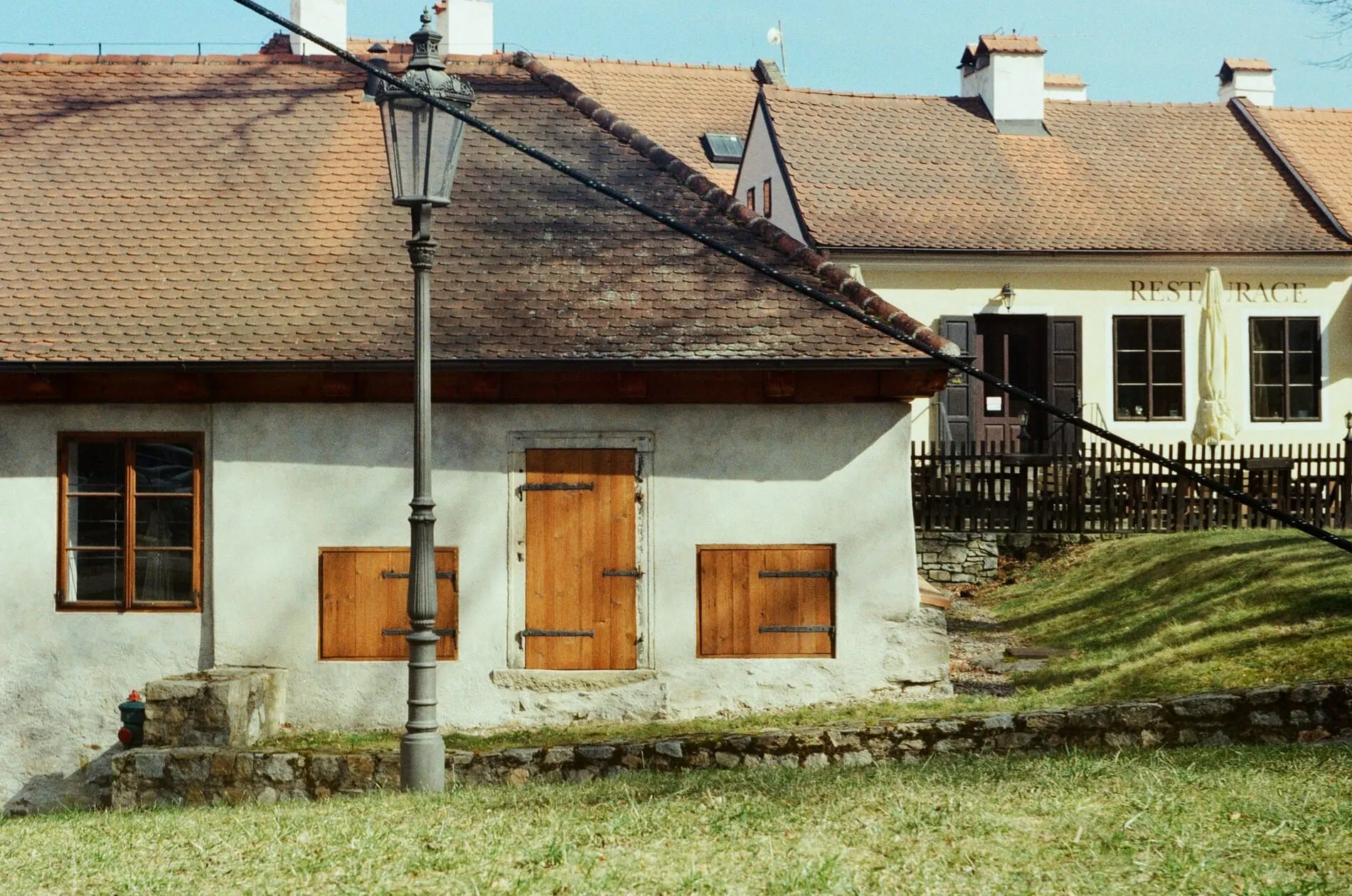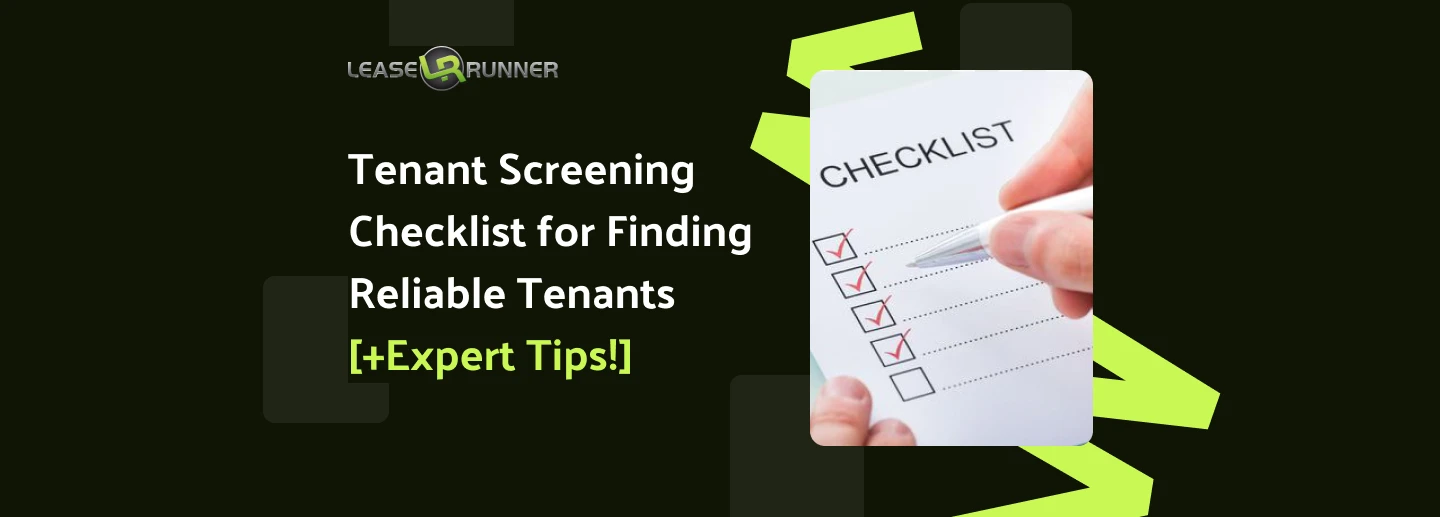Tenant screening is a review of a prospective renter's capacity to follow lease conditions, pay their rent on time, and keep the property in excellent shape. By use of a tenant screening checklist, landlords may maintain organization during this examination.
Often included to paint a complete picture of the applicant are personal information, financial data, references, proof of income, or rental history. Use a reliable checklist and emphasize facts over first impressions to lower the possibility of renting to someone who could be late with payments or damage the rental property.
Don’t need to explain further; let’s scroll down for the detailed information right below!

What is Tenant Screening? Why Is It Essential for Landlords?
Tenant screening is the process of weeding out all potential applicants prior to allowing them to rent from landlords. This is what landlords do to determine if an individual will pay on time, obey rules, and maintain the property. Through a good tenant screening checklist, you go through the facts about each individual—never speculate.
You screen things like their credit report, employment, income, and history of rent payments. Not to select the most ideal tenant—this prevents you from making time- or money-wasting errors.
An easy-to-use tenant screening form prevents you from making these kinds of errors and enables you to:
- Determine whether the renter can afford to pay (do they make enough?)
- Verify their employment and confirm the income is consistent
- Check the payment history of rent to ensure they have paid rent on time previously
- Ensure their credit is good and not full of unpaid bills
- Check their criminal and previous eviction history
Landlords prefer tenants who:
- Are reliable and can pay rent monthly
- Paid rent on time previously and cleaned the house when they left
- Have no previous serious crime and no eviction
- Are very well recommended by previous landlords
With a checklist, you can compare them all fairly. It allows you to spot warning signs, avoid bad tenants, and safeguard your rentals. Renting is simplified, your stress level is reduced, and your property is operating well.
3 Key Tenant Screening Criteria Every Landlord Must Consider
Establishing a comprehensive tenant screening checklist starts with understanding the key criteria. Here are the top criteria that every landlord must consider when evaluating renters:
1. Financial Stability
Any tenant screening form starts with, and most importantly, consists of financial stability. A landlord determines if the renter has continuous income, enough savings, and consistent rent payment capabilities when they confirm the financial health of the tenant.
Pay stubs and bank statements provide unambiguous proof of stability in finances in the fast-paced rental markets of today, therefore supporting the rental requirements for tenants.
It’s also wise to assess rental criteria through credit checks, ensuring that there are no past delinquencies affecting credit scores. Financial stability remains the cornerstone that answers what landlords look for in tenants when determining how to choose a tenant.
2. Rental History
Past behavior is a strong indicator of future performance. Check if the applicant paid rent on time and followed rules in previous homes. Ideally, a tenant has at least 12 months in one place, showing stability. Ask for the contact information of former landlords and confirm residence dates.
During these reference calls, inquire if the tenant caused any problems or was ever evicted. A tenant requirements list often includes “no evictions in the past few years” and a clean rental record.
Consistency (like a long, trouble-free stay) is a strong positive. Reliable tenants usually have steady housing histories with no sudden moves or lease breaks.
3. Employment Verification
Even a spotless rental and credit record won’t matter if the tenant loses their income. Verify the applicant’s employment by reviewing recent pay stubs, W-2 forms, or bank statements that match the income they reported. If possible, contact their employer (with permission) to confirm their job title and how long they’ve worked there.
Landlords often require a minimum employment length (for example, 6 months at the current job). Knowing the tenant’s work history gives you confidence in their future income. This stage guarantees that the tenant not only can pay the rent now but will probably keep doing so.
You can then lay a strong basis for selecting qualified tenants by concentrating on these tenant screening criteria: income, rental history, and employment stability.

Step-by-Step Tenant Screening Checklist
Finding good tenants is key to a stress-free rental. At LeaseRunner, we use a clear tenant screening checklist to help every landlord pick the best renters. Here’s how any landlord should screen new tenants in simple steps.
1. Define & Document Screening Criteria
Before you list your property, make a written list of your rules. These are your rental requirements for tenants. Decide on your income needs. Write down your rules for pets, credit, and job status. Use a simple form or spreadsheet.
These clear tenant screening criteria keep things fair for every applicant. They help you stay legal and protect you if someone questions your process.
2. Pre-Screen Applicants
Start strong by talking with interested renters before showing the home. Ask if they meet your top tenant requirements list. For pets or smoking, ask these questions up front. This saves time. You avoid showings to people who do not fit your rental criteria.
3. Application Collection
Give every serious renter your full application. It should ask for contact info, past rentals, job, and income. A good form covers all tenant requirements, so you can compare everyone in the same way. Collect all the needed details before you move forward.
4. Identity Verification
Check everyone’s ID. Make sure the name matches the application—no mistakes or fake names. A driver’s license or passport is best. This key part of any tenant screening form helps you find honest renters.
5. Run Credit & Background Checks
A must for every landlord: always run comprehensive credit and background checks. This reveals late payments, bankruptcy, criminal history, and prior evictions.
LeaseRunner’s screening tools make the tenant screening checklist easy: order an eviction check, pull a credit report, and use a tenant criminal background check to make sure your future renter meets all rental requirements for tenants.
6. Income & Employment Verification
What do landlords look for in tenants? It always starts with proof that rent can be paid. Contact the employer directly to verify job status and monthly income. Ask for recent pay stubs or tax returns to meet your tenant requirements list for financial stability.
If the numbers don’t add up, keep looking. Your tenant screening form must always confirm steady employment and enough income.
7. Rental History & Reference Checks
Always check references from past landlords. Ask if the applicant paid rent on time, kept the place in good shape, and gave a proper move-out notice.
If you’re not sure what to ask, use this set of questions to ask tenants during reference calls. A solid tenant screening checklist will always include these checks to spot hidden problems or eviction risks.
8. Interview Tenant
Meet your top candidates for a quick chat or in-person interview. This lets you see if they fit your property and clarify any points from their tenant requirements list. Watch for honesty, communication, and reliability. Face-to-face meetings give you that gut feeling about how to choose a tenant wisely.
9. Pet Screening (If Applicable)
If pets are allowed, add pet screening to your tenant screening criteria. Ask for details—breed, size, age, and vaccination records. Require a separate pet agreement if needed to clearly state your rental requirements for tenants regarding animals.
10. Review Compliance and Finalize Selection
Check everything again before you choose. Did you follow your tenant screening checklist for every person? Did you keep your rental requirements for tenants the same for everyone? Stay fair and follow fair housing rules.
A good tenant screening form stops many problems before they start. When screening prospective tenants, stick to simple rules and never skip steps. At LeaseRunner, our tools and forms help every landlord use a clear, fair process.
Choose tenants with steady income, a clean rental record, and honest answers. This method keeps your place safe and your rental business running smoothly.
How to Avoid Common Tenant Screening Mistakes

Even with a strict tenant screening checklist, landlords must avoid certain screening mistakes. Neglecting any step of the procedure may result in selecting an inappropriate renter. Here are some typical errors and the recommended strategies to avoid them.
- Don’t Skip Verifying the Application Thoroughly: Relying exclusively on the initial application without confirming further information may result in disparities in rental requirements. Documents should always be properly verified.
- Pay Close Attention to Red Flags in Background Checks: Don't disregard a history of evictions, unpaid payments, or conflicting work records. These red flags are vital for fine-tuning your tenant screening routine.
- Ensure Compliance with Fair Housing Laws: Make certain that your screening process complies with local and federal legislation. A fair and consistent application procedure is critical to satisfying your rental needs of renters.
- Ask Clear, Specific Questions When Contacting References: Always ask direct questions about the applicant’s payment history, behavior, and reasons for moving; this helps you verify their reliability and avoid vague or unhelpful feedback.
- Avoid Rushing Through the Screening Steps: Always allow enough time to complete each stage of the tenant screening checklist. Rushing through the tenant screening might lead to poor decision-making.
By recognizing these flaws, landlords may enhance their tenant screening process and maintain high rental standards, resulting in long-term profitability.
How to Choose a Tenant That Meets Your Rental Criteria?
Choosing the ideal renter requires a defined strategy. You want someone who meets your rental standards for renters. This protects your property while also providing a consistent source of revenue. Begin by establishing your primary rental requirements.
But which ones are the most important? The priority is to maintain a steady income. Tenants should earn at least three times their monthly rent. The next step is to establish good credit. Look for ratings over 650 to indicate that they pay bills on time.
A clean criminal record is critical. There are no recent crimes or evictions. Positive rental history is also important. Past landlords should report that the renter paid rent and left the property in excellent condition. It is also important to have a steady job. Check for a minimum of six months on the job.
Here is a step-by-step guide that may help you determine how to pick a renter:
- Step 1: First, create a list of tenant criteria. Write out your must-haves, such as income proof and recommendations. Use this list in your ad to begin filtering early.
- Step 2: Next, when screening potential renters, request applications with pay stubs and ID.
- Step 3: Verify everything. Call employers to confirm employment.
- Step 4: Conduct background checks for safety.
Contact previous landlords if you have any special queries, such as "Did they pay on time?" or "Is there any damage?" For example, if an applicant makes $3,000 per month and the rent is $1,000, they fulfill the income requirement.
However, if their credit history includes late payments, they will fail the tenant screening process. Another example: a high-income renter who was evicted last year. That is a red sign in terms of what landlords look for in potential renters.
Always check candidates against your list. Choose the one that matches all of the points. In this manner, you may prevent conflicts and obtain a trustworthy tenant.
What to Do After Tenant Screening?
Once you've completed the screening process and the tenants pass every criterion in your tenant screening checklist, you should:
1. Making the Final Decision
Compare applicants against your established criteria. Choose the candidate who best fits your requirements and demonstrates reliability and financial stability.
2. Offering the Lease
Give the chosen tenant an official lease. Make sure all sides know their responsibilities and that all terms are precisely expressed. This clarity will reduce future misinterpretation.
LeaseRunner’s Tenant Screening Solutions: A Helpful Tool for Landlords
LeaseRunner’s platform offers credit, criminal, and eviction screening reports that tenants authorize online. Because it’s tenant-initiated, the credit check is a soft inquiry that won’t hurt the tenant’s score. Reports appear instantly once the applicant authorizes them.
LeaseRunner also provides sample lease and rejection letter templates to simplify the process. For example, see our blog, “How to Check Your Tenant Screening Report”, for details on interpreting those reports.
Conclusion
A well‑constructed tenant screening checklist is the cornerstone of successful property management.
It provides landlords with the structure needed to meet essential rental criteria and compile a robust tenant requirements list that answers what landlords look for in tenants and simplifies how to choose tenants from among screening prospective tenants.
By following a systematic and transparent screening process, you can safeguard your investment, maintain property standards, and ensure a harmonious environment for all occupants.
If you are feeling unsure about this topic, visit LeaseRunner’s articles. We can help you streamline your screening process so you can confidently choose the right tenant with minimal hassle.
FAQs
Q1. What do landlords look for in tenants?
Landlords generally look for tenants who can reliably pay rent, care for the property, and follow lease terms.
Q2. What happens after I reject an applicant?
If you reject a rent request based on their credit or background check, federal law compels you to provide applicants with a written adverse action notification. This notification must explain why they were refused and provide instructions on how to acquire and contest the screening report.







